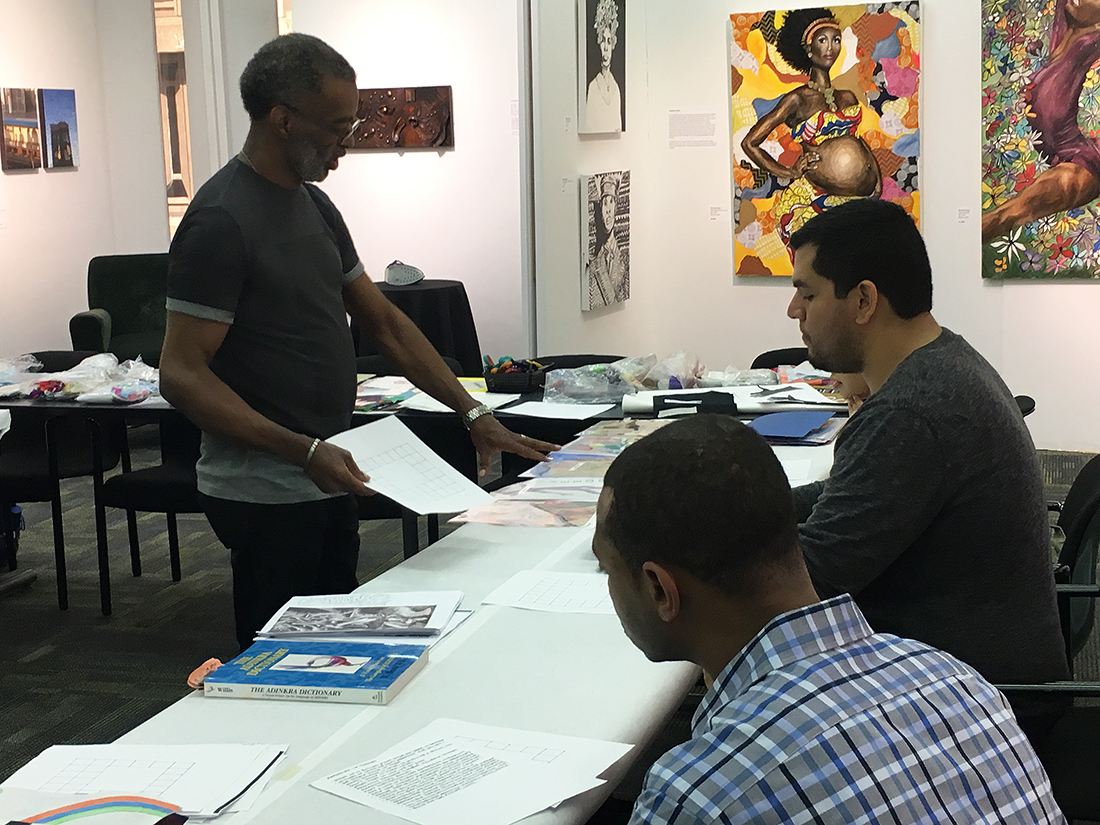By Alex Ortiz
Brittney Hopgood graduated from the University of Illinois at Chicago in 2014 with a degree in industrial design. The high point? Getting a part-time job as a African-American Cultural Center marketing assistant. She had struggled to find an internship within her major to gain experience, and there, she found opportunity — and context — as a black student.
Hopgood soaked up the center’s cultural programming and got to help plan exhibits like an black artwork showcase. She says cultural centers help students of color avoid getting lost in the maze of being in a mostly white institution. Higher education funding cuts now put these centers in peril.
“We have had instances in which students have expressed frustration regarding what’s going on in the outside world,” said Hopgood, who now works as a graphic designer. “Especially dealing with police shootings and brutality. So they come to this space, and they have an open conversation about it, and some of our exhibitions have been a reflection of what has been going on.”
As Hopgood’s internship search shows, the center acts as an information hub for students who find difficulty navigating the university. Such centers function as a retention tool to help students figure out everything from finances, to family issues, to classroom challenges. It’s one thing to recruit and accept students of color; it’s another thing to have them graduate.
But those benefits might be limited with a continued budget crisis.
There are concerns at public universities like UIC about how cuts might affect the parts of campus that benefit diversity. In early October, the University of Illinois System announced nearly 500 recent non-instructional staff cuts could save up to $1.5 million a month. Fortunately for the U of I system, it has substantial cash reserves and large alumni networks, but the possibility of less state funding has caused some uncertainty about the future of the cultural centers.
UIC has six cultural centers dedicated creating a diverse academic environment that reflects Chicago. Of UIC’s 29,000 students, 37 percent are white, 20 percent are Latino, 18 percent Asian, and 8 percent African-American as of 2015.

“Part of it is to be that kind of net that catches students who are, not so much falling but they’re just looking for other things,” said Lori Barcliff Baptista, the center’s director. “We do have student employment. We do have internship opportunities. We do often have research opportunities. If a student came in and said I want to do a program on whatever, we’d help.”
Baptista said the center does things as simple as helping a student find a particular building or directing a student in need to the appropriate support center, such as counseling or careers. In recent years, the center has tried to give African-American students a chance to meet one another with events like a barbecues at the beginning of the school year.
Baptista said financial concerns are a “really big part” of outreach. Many students need to work while taking classes. Some might have different family obligations that require caring for kids or older relatives. For students like Hopgood, the center provides opportunities to ease external pressures and enhance their experience.
“It worries me,” said Jauwan Hall, an African-American UIC senior in political science and a student member of the U of I Board of Trustees. “Just not knowing one day what resources may be available and what may not be available. Especially for a center like this because it took a lot for this to exist.”
Most of the center’s approximately less than $250,000 annual budget goes to the salaries and operations. Other money comes from grants, donations or gifts. The staff includes a full-time director and an assistant program director, a post-doctoral associate, and four student staff members. The prospect of cuts is why Baptista wants state lawmakers to visit the cultural centers so they can see just how much a lack of a sufficient state money could impact students.
“I think if they were involved in even a small way of just seeing what it is that we all do, they’d have a better understanding of maybe what some of the needs are, in very practical ways,” Baptista said. “When they’re looking at these big numbers and these big spreadsheets, it’s not translating into people.”
Other centers like the Asian American Resource and Cultural Center have been able to find key forms of funding that will offset budget cuts. UIC was the first university in the Midwest to receive an Asian American and Native American Pacific Islander-Serving Institution grant for a little more than $5 million over five years because their student population is at least 15 percent Asian.
Center Director Mark Martell sees this money as particularly important beyond contributing to diversity and academics. Some students report feeling pressured by their families to excel or follow a certain career path, and difficulty paying for school or needing help with abusive relationships.
“A lot of people may just see the surface level of what we do,” Martell said. “But don’t understand the deeper level that we present to students.”
Photo at top: Students participate in an art project with Jim S. Smoote II, a retired CPS teacher and textile artist, at the African-American Cultural Center at UIC. (Alex Ortiz/MEDILL)

